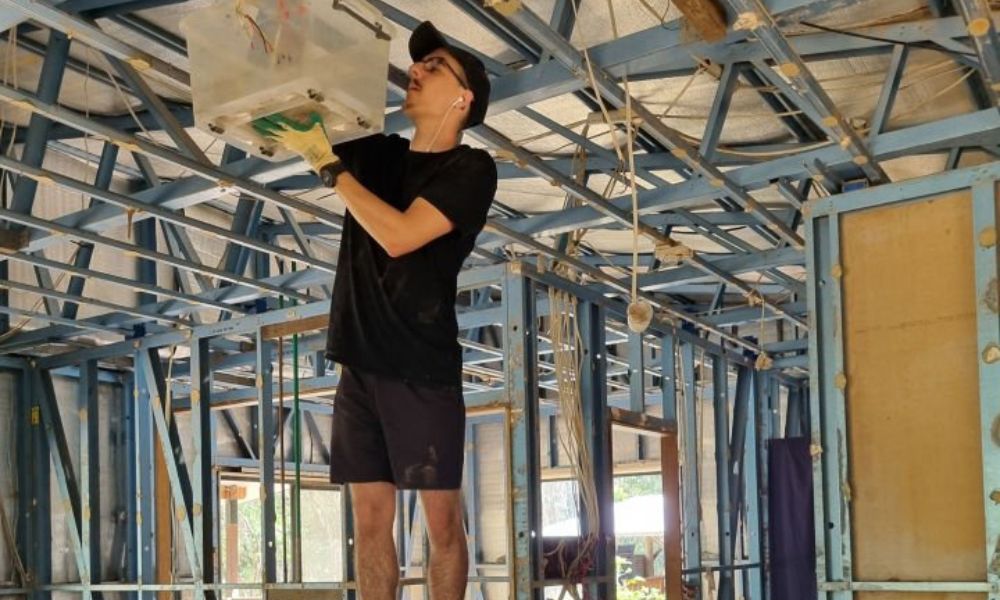Suncorp puts over $200,000 into Queensland recovery as weather costs skyrocket

Suncorp puts over $200,000 into Queensland recovery as weather costs skyrocket | Insurance Business Australia
Catastrophe & Flood
Suncorp puts over $200,000 into Queensland recovery as weather costs skyrocket
Importance of proactive planning emphasised
Catastrophe & Flood
By
Roxanne Libatique
Suncorp Group and the Foundation for Rural & Regional Renewal (FRRR) have provided over $215,000 in funding to support 12 community projects across regional Queensland.
The grants are aimed at helping communities recover from Cyclones Jasper and Kirrily, which caused significant damage less than a year ago.
The initiative is part of broader efforts to enhance disaster resilience in the face of increasing extreme weather events.
Suncorp’s community project grants
The $216,269 in grants, delivered through the Rebuilding Futures program, will assist not-for-profit organisations in remote and rural areas to restore essential community infrastructure, improve organisational capacity, and expand access to critical services.
Lisa Harrison, chief executive of consumer insurance at Suncorp, said the grants reflect the varying recovery needs of communities still dealing with the aftermath of the cyclones.
“Recovery from an extreme weather event, like a cyclone or flooding, takes time, and this round of grants from FRRR and Suncorp demonstrates that each community’s journey is different,” she said.
Recipients of Suncorp’s community project grants
The communities receiving the grants are focused not only on rebuilding but also on future-proofing their infrastructure.
Organisations such as the Cape York Folk Club and the Mt Garnet Golf Club are using the funds to upgrade facilities and enhance their resilience to future cyclones. In addition, Surf Life Saving Queensland’s North Barrier and North Queensland branches are investing in flood rescue equipment and training to better prepare volunteers for future emergencies.
Nina O’Brien, FRRR’s disaster resilience and recovery lead, stressed the importance of proactive planning as the next storm season approaches.
“While the weather cannot be prevented, the impact of disasters can be lessened through good planning,” she said.
O’Brien highlighted the collaborative efforts of regional organisations, such as the Kuku Bakal Kaykayanda initiative led by Jabalbina Yalanji Aboriginal Corporation, which focuses on long-term community resilience.
The Rebuilding Futures program has, to date, distributed over $1.2 million to 74 not-for-profit organisations across Australia. These efforts aim to strengthen communities’ ability to recover from disasters and prepare for future weather events.
Extreme weather costs continue to rise in Australia
The growing financial burden of extreme weather events on Australia’s economy has been a focal point in recent reports.
In the past 30 years, Australian insurers have paid out an average of $2.1 billion annually to policyholders affected by extreme weather. However, this figure has surged in recent years, with an average payout of $4.5 billion annually over the past five years. The increase is largely driven by flooding events, which have become more frequent and severe.
The ICA report also detailed that insurers faced $2.19 billion in claims related to extreme weather in the 2023-24 period, a figure nearly identical to the previous year. However, the total number of claims increased significantly, reaching nearly 157,000, up by 66,000 compared to the previous period. This suggests that while individual claim amounts may have decreased, the broader impact of extreme weather was felt across a greater number of communities.
One of the costliest weather events during the period was the Christmas storms, which caused $1.33 billion in claims across New South Wales, Victoria, and the Gold Coast hinterland. Ex-Tropical Cyclone Jasper, which struck Far North Queensland, was particularly costly for individual policyholders, with the average claim reaching $36,000 – nearly three times the average from the Christmas storms.
Related Stories
Keep up with the latest news and events
Join our mailing list, it’s free!






